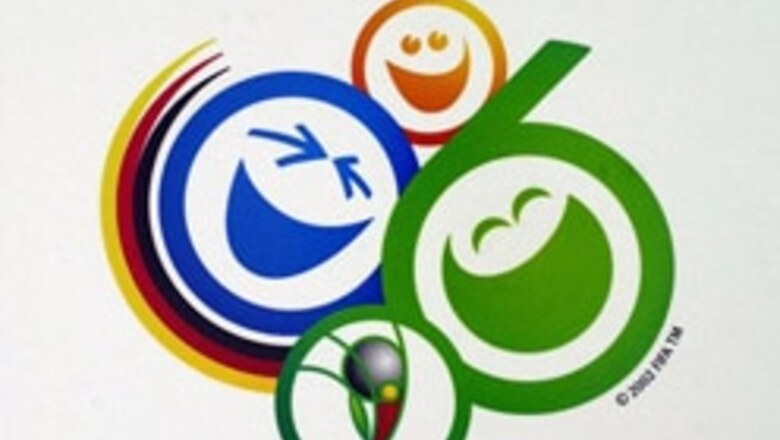
views
New York: World Cup fans are accustomed to the yellow of Brazil, the blues of France and Italy and the stripes of Argentina and Paraguay.
They should now get ready for the elephants of Ivory Coast, the eagles of Tunisia and the black stars of Ghana.
The uniforms of this year's World Cup teams are as varied as the 32 countries they represent, almost all carrying a distinct look.
It's a change from recent years, when major manufacturers devised patterns and merely changed the colors to adapt to the country.
Bigger federation badges, pinstripes and gold piping are some of the changes. Adidas, Nike and Puma are trying to blend tradition, national honour and their own brand identity into shirts, shorts and socks for the fields of Germany.
"It's our Milan runway, it really is," said Peter Hudson, Nike's creative director of global soccer.
With soccer's premier international events generally on a two-year calendar, many national teams update their uniform every 24-48 months.
But with 48 pages of rules from FIFA regulating what can and can't be worn, manufacturers have limited discretion, which is sometimes further restricted by federations, their teams and players who actually have to don the garb.
Some federations allow almost no deviation from their traditional uniforms, such as Brazil's yellow or Argentina's blue-and-white vertical stripes. The biggest change for Brazil this year is a green standup collar.
African teams, however, have been the testing grounds for some of the more innovative designs.
Four years ago, Puma outfitted Cameroon in a sleeveless shirt worn during the African Cup until quashed by FIFA which wanted sleeves in the shirts. Puma had to quickly add a black mesh to meet the requirement.
Two years ago, Puma again introduced a one-piece uniform, which soccer officials also barred.
"We push our interests," Puma international team sport business unit manager Filip Trulsson said. "It's not a matter of Puma going up against FIFA on an annual basis, but we want to stretch the boundaries."
Puma will outfit 12 of the 32 teams in Germany, including all five African teams. Eight more will be wearing Nike uniforms and six others have Adidas. Lotto and Umbro will outfit two teams apiece, while smaller manufacturers Marathon (Ecuador) and Joma (Costa Rica) have one each.
Puma this year will have tonal prints sewn into the fabric of nine teams, a darker or lighter shade of the primary color in patterns specific to the countries: An elephant (Ivory Coast), a hawk (Togo), stars (Ghana), an eagle (Tunisia), a lion (Czech Republic), the Swiss flag (Switzerland) or a palm tree with crossed swords (Saudi Arabia).
PAGE_BREAK
It's not entirely new. During the 1990s, some teams used a similar shadow striping. Mexico had a very noticeable Aztec design in light and dark greens, while Brazil had its confederation shield more discreetly blended into its 1994 shirts when it won a fourth title.
With Germany, Argentina, Spain and France among its clients, Adidas probably had the least discretion to alter the uniforms.
Spain's standard home red has vertical yellow pinstripes this year, not unprecedented in its history. The Japan kit, with accentuated stripes on both the home and away jerseys, is the most offbeat.
"Most of our countries are very traditional," said Michelle Bender, Adidas' category manager for soccer apparel.
"Countries that we have that didn't qualify, like Nigeria, those have a little more flair and they're not as staunch in their heritage. The Japan jersey has different marks and that's the only one where we stepped out of the traditional."
Recently, most major manufacturers developed a stock pattern for jerseys, blending in the colours of the countries to highlight their brand. Adidas had broad stripes over the shoulder with the countries' colors.
Nike had a circle on the chest where the numbers were displayed. This year, Lotto has a pattern with radiating stripes for Serbia-Montenegro and Ukraine, while Umbro has a stripe over the shoulder and midway down the side for England and Sweden.
Adidas has a less-obtrusive form this year, incorporating its hourglass-like category logo the primary element on its Teamgeist ball, the official ball of the World Cup into all of its apparel. It's most noticeable on the side panels of the jerseys.
Nike and Puma, however, have gone a different route, developing a specific look for each team.
So individual is the US uniform, with a red-blue stripe down the left side of the white shirt, that the concept was continued down the left side, including the left sock.
And there's also no danger of the players putting the sock on the wrong foot, either. Nike's socks this year are sewn for the right and left, and labeled as such.
None of the manufacturers are ready to disclose how much their presence at the World Cup is worth.
"The global market for soccer gear comes to billions of dollars a year. So by virtue of size alone, the number of eyeballs, and the number of those eyeballs who are looking to spend at the Cup is clearly extremely important," said Evan Osborne, who teaches sports economics at Wright State University in Dayton, Ohio.
"If one of a company's sponsored teams wins the Cup, so much the better, but even being there is vital."
















Comments
0 comment